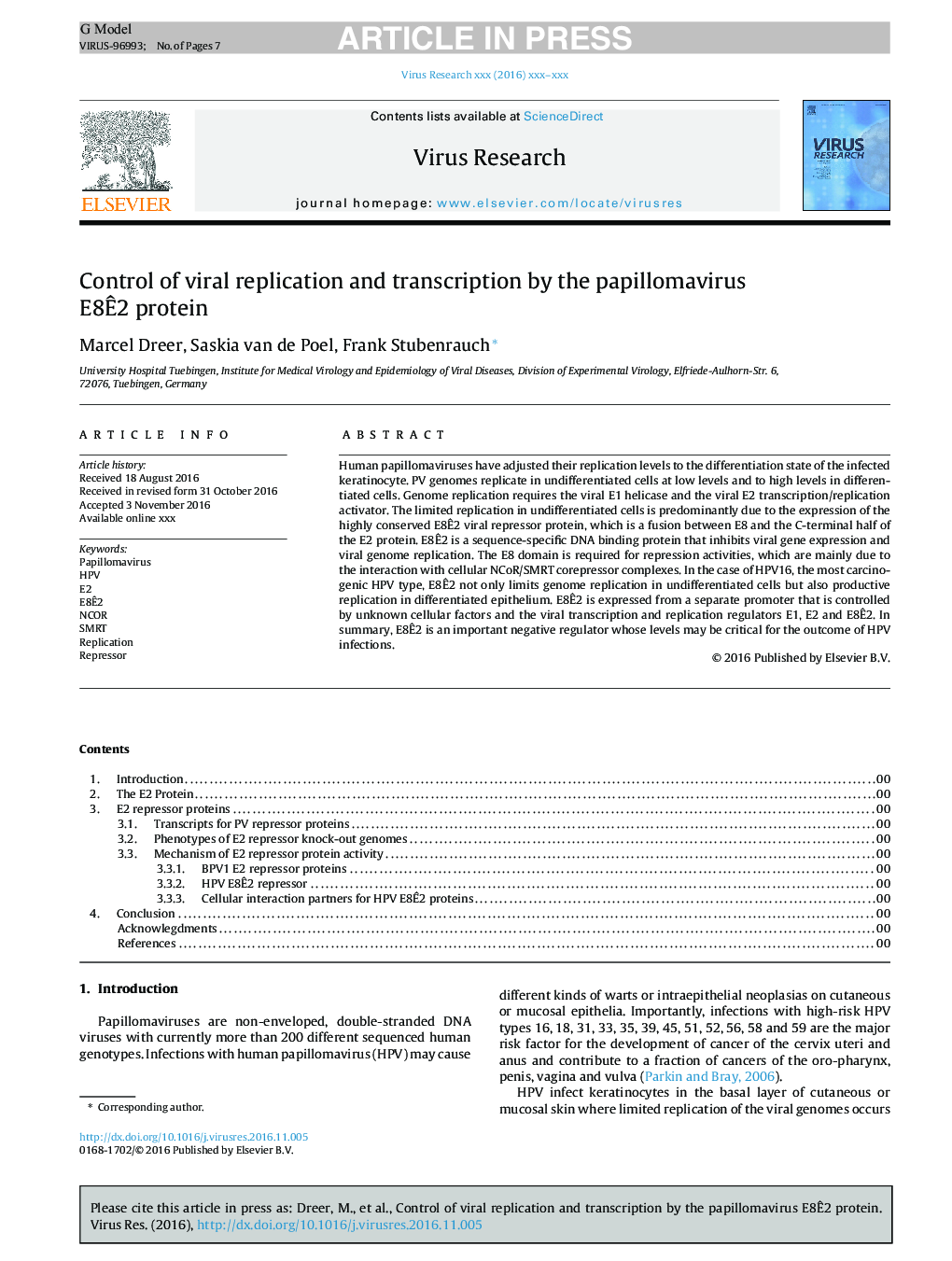| Article ID | Journal | Published Year | Pages | File Type |
|---|---|---|---|---|
| 5675590 | Virus Research | 2017 | 7 Pages |
Abstract
Human papillomaviruses have adjusted their replication levels to the differentiation state of the infected keratinocyte. PV genomes replicate in undifferentiated cells at low levels and to high levels in differentiated cells. Genome replication requires the viral E1 helicase and the viral E2 transcription/replication activator. The limited replication in undifferentiated cells is predominantly due to the expression of the highly conserved E8^E2 viral repressor protein, which is a fusion between E8 and the C-terminal half of the E2 protein. E8^E2 is a sequence-specific DNA binding protein that inhibits viral gene expression and viral genome replication. The E8 domain is required for repression activities, which are mainly due to the interaction with cellular NCoR/SMRT corepressor complexes. In the case of HPV16, the most carcinogenic HPV type, E8^E2 not only limits genome replication in undifferentiated cells but also productive replication in differentiated epithelium. E8^E2 is expressed from a separate promoter that is controlled by unknown cellular factors and the viral transcription and replication regulators E1, E2 and E8^E2. In summary, E8^E2 is an important negative regulator whose levels may be critical for the outcome of HPV infections.
Related Topics
Life Sciences
Immunology and Microbiology
Virology
Authors
Marcel Dreer, Saskia van de Poel, Frank Stubenrauch,
